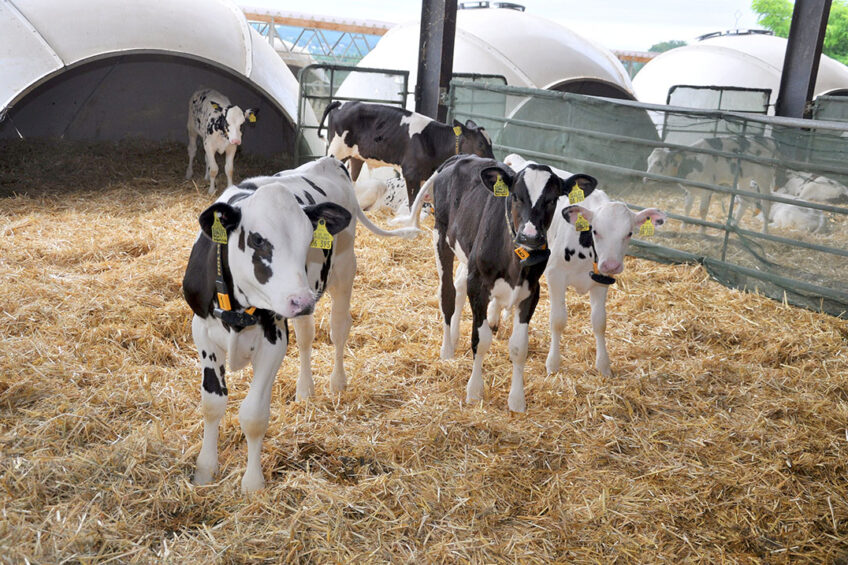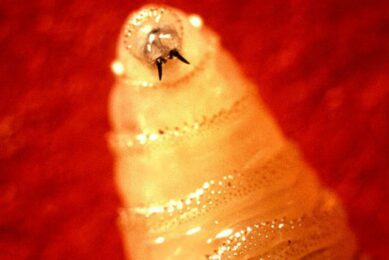Rearing the 2022 dairy heifer requires attention to detail

With input costs on dairy farms increasing, extra care and attention should be dedicated to ensuring dairy heifer replacements are reared as efficiently as possible.
From birth to calving at 24 months, dairy heifers represent a significant cost investment for the farmer, therefore the rearing programme needs to work. In order for that animal to yield as productive a life as possible, a number of key stage targets should be met in terms of growth in its early months.
Sometimes on busy dairy farms, rearing calves does not get the priority and attention it deserves and that can affect their ability to produce milk, and can generate extra costs.
Farmers have been urged to recognise the importance of heifer rearing and knowing the costs of the animals throughout the different growth stages.
Rearing dairy heifer calves is the second largest annual expense for dairy farms.
Trevor Alcorn is a dairy adviser with the College of Agriculture, Food and Rural Enterprise (CAFRE) in Northern Ireland and says it is critical that farmers pay close attention to the rearing process.
He says: “Rearing dairy heifer calves is the second largest annual expense for dairy farms, accounting for about 20% of production costs. It is critical that farmers pay close attention to detail, from even before birth and up to weaning, to ensure healthy calves.”
The advice from CAFRE is that the management for healthy calves starts pre-calving with the milking cow dried off at least 6-8 weeks before calving to ensure sufficient time to produce quality colostrum.
A high yielding cow with a low body condition at drying off will require a pre-calver concentrate ration, but certainly all cows should receive dry cow minerals to maintain the required vitamin and mineral status of both cow and developing calf. Ideally, the cow should be calving at an optimum body condition score of 3 that is not too fat nor too thin.
Newborn calf
Alcorn adds: “The calving environment should be as clean as possible with dry bedding to minimise disease risk. Disinfected calving aids should be ready for use. Once the calf is born, make sure that its airway is clear and that it can breathe properly.
“The naval should be treated after birth with an iodine solution dip to prevent the onset of joint-ill. Dipping gives better results than spraying.”
Newborn calves have no active immunity at birth and must receive between 3 and 5 litres of colostrum as soon as possible after birth. This should preferably be from a teat to establish a good suckling reflex, with a minimum of 6 litres fed in the first 12 hours.
The level of antibodies in the colostrum decreases with each milking as does the calf’s ability to absorb antibodies into its system. Calves are unable to absorb antibodies from the intestine after 24 to 36 hours.
Farmers also need to watch calves closely for infectious scours, which are caused by a number of pathogens, and are the biggest killer of calves under 1 month of age. Good hygiene in the pens will help reduce the presence of scours, and together with good ventilation will help reduce diseases like pneumonia.
Walk through the calves regularly allowing the calves to get used to human contact.
Birth to weaning
Whole milk or powder-based milk replacement is fed to calves up until they are 2 months, with a coarse feed mix offered from 1 week of age.
Access to clean water and hay or straw is also essential during this period as the long fibre will help develop the calf’s rumen.
Calves can be weaned when they are eating at least 1kg of calf concentrate and after weaning this should be increased to 2kg per day, offered along with forage.
A good tip from Alcorn during this period is to regularly have physical contact with the calves, which bodes well for future management procedures.
He states: “Many farmers now use automatic feeders for batches of calves thus reducing labour requirement. However, remember to walk through the calves regularly allowing the calves to get used to human contact. This should encourage calves to be quieter, more easily managed and milked when mature.”
Feeding to puberty
Young heifers should be fed to achieve good growth to puberty, with emphasis on growing the body frame and not fat. In order to achieve a good sized frame to allow for earlier calving, the heifers should be fed a ration containing plenty of protein with a good input of energy.
The rumen is not fully functional until around 9 months of age and until then calves cannot fully utilise forage or utilise soluble nitrogen or degradable protein from grass silage.
Ideal frame heights for Holstein Friesian heifers when being inseminated is around 50 inches at the withers, which is the usual height at around 13-15 months of age.
Heifers should be grown rapidly to calve at 85% to 90% of their mature body weight or, in terms of kilogrammes, around 600kg at 24 months of age.
Target weights
In an ideal world, heifers should be grown rapidly to calve at 85% to 90% of their mature body weight or, in terms of kilogrammes, around 600kg at 24 months of age.
With this in mind, the heifers need to grow to 50% of their adult weight by the time they are 1 year old.
It has been recommended that the heifers, from birth to calving, will need to average a liveweight gain of 0.8kg/day. If the heifers calve below weight this could lead to under production of milk, therefore reducing profits.
A number of growth targets for Holstein Friesian heifers from birth to calving give guidance to farmers. The growth target:
- from birth to 4 months is 150kg;
- from 5 to 10 months is 280kg;
- 11 to 13 months is 350kg;
- 14 to 17 months is 460kg;
- 18 to 22 months is 600kg and
- 23 months to calving is 650kg
The target of calving at 24 months is an important one, and farmers should consider that a heifer calving at 24 months may have produced 5,000 litres of milk by the time a heifer calving at 30 months has calved. This could represent in the region of €2,000 at a rate of €0.40 per litre.
Join 13,000+ subscribers
Subscribe to our newsletter to stay updated about all the need-to-know content in the dairy sector, two times a week.










